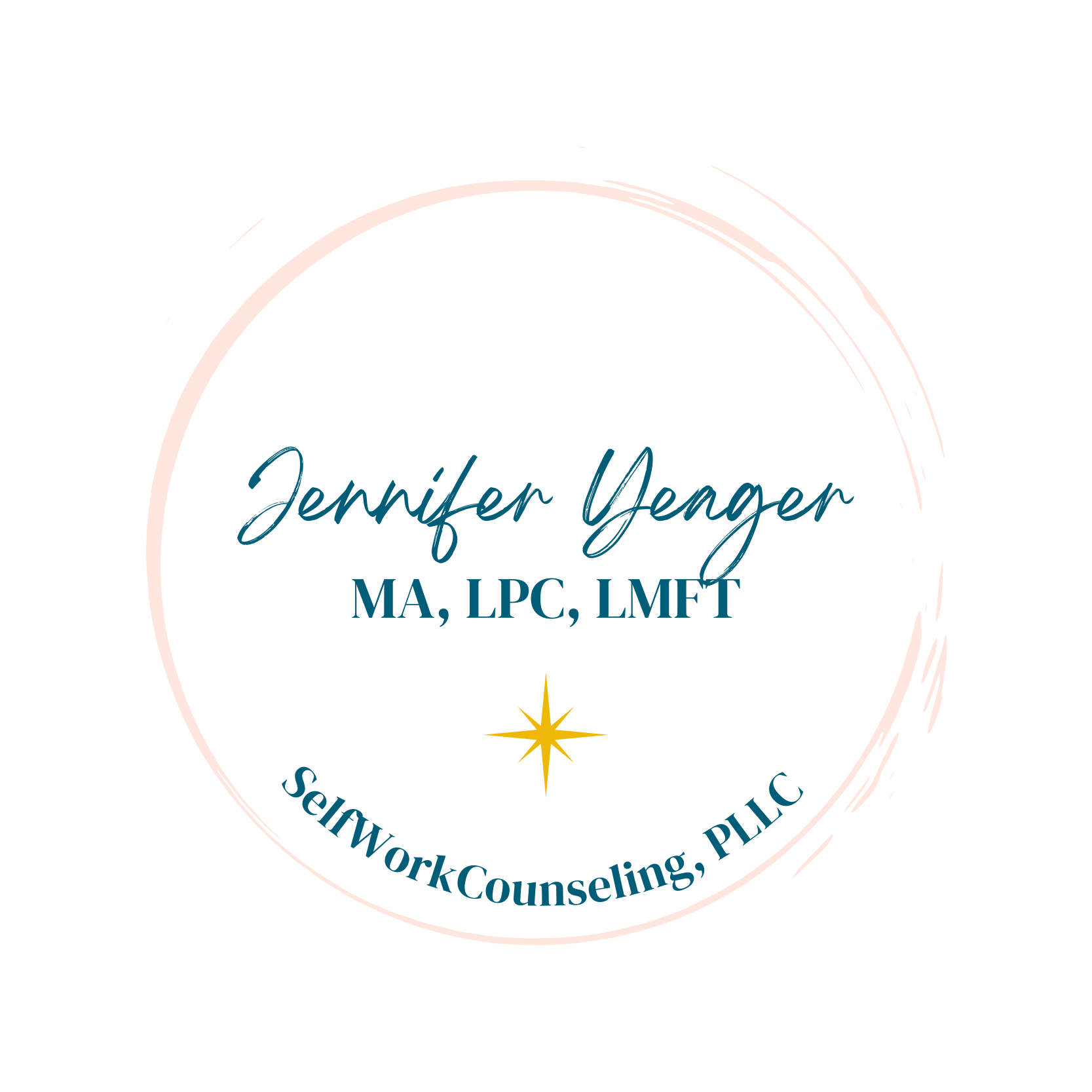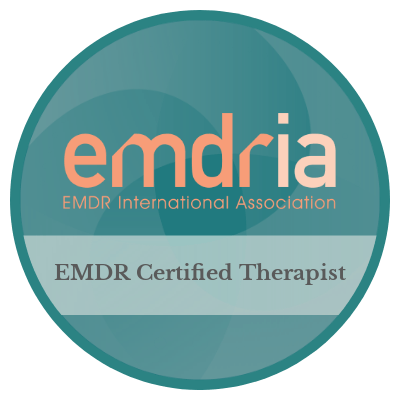Blog Layout
Embracing Discomfort
Jennifer Yeager, LPC, LMFT • April 12, 2021
Nelson Mandela once said, “May your choices reflect your hopes, not your fears.” Do your choices reflect your hopes or your fears? Have you allowed discomfort to guide your choices?
Discomfort often feels like uncertainty, nervousness, and sometimes fear. Most of us dislike discomfort and actively avoid it. Avoiding discomfort keeps us in our comfort zone. Avoiding discomfort keeps us stuck. While this may feel safe, this is a false sense of safety. When we are too comfortable, we are stagnant, not growing or moving forward.
Life often provides us opportunities that call us out of our comfort zone. Each day we are faced with the choice between what is best and what is easiest. Sometimes, the acknowledgement of the difference between the choices we are making and who we truly can be, can bring on feelings of discomfort. It is often easier to continue behaviors and make the same choices instead of facing our fears and embracing discomfort.
Change and growth require embracing discomfort. Embracing discomfort is not only hard and scary it requires vulnerability. In the words of Brené Brown, “You can choose courage, or you can choose comfort. You cannot have both.” She describes vulnerability as “uncertainty, risk, emotional exposure”. It is the feelings and sensations we have when we step out of our comfort zone. While we tend to mistake this vulnerability as weakness, this is, truly, the feeling of courage.
“Vulnerability is the birthplace of love, belonging, joy, courage, empathy, and creativity” (Brené’ Brown). Many of us spend our lives avoiding vulnerability. Going out of our way to avoid situations that may lead us to experience discomfort. Over time we develop patterns of avoiding discomfort and vulnerability. These patterns may include striving for perfection, numbing out, or “dress rehearsing tragedy” aka going down the rabbit trail of all the ways that things can go wrong. Avoiding vulnerability leads to a false feeling of safety and control. Avoiding vulnerability and discomfort does us much more harm than good.
We are wired for belonging and connection. Without vulnerability and discomfort there is no love, no belonging, no connection, no joy. We cannot place walls around us to keep the bad out, yet still let the good in. I challenge you to begin recognizing how you may be avoiding vulnerability. Start to become aware of the moments of discomfort, allow yourself to the opportunity sit with discomfort and learn from it. Begin to identify your patterns of avoiding discomfort. Ask yourself what avoiding discomfort is doing for you. What is it costing you? Is avoiding discomfort worth the it? Embracing discomfort and embracing vulnerability is one of the most courageous things you can do. I hope you give yourself permission to begin understanding your patterns of avoiding discomfort and vulnerability. I hope you begin choosing your hopes over your fears.

By Jennifer Yeager
•
March 11, 2025
When a marriage is devastated by sex addiction and betrayal trauma, the aftermath often feels like standing in the middle of an earthquake — the ground beneath you is cracked, unsteady, and unfamiliar. The betrayal fundamentally shifts the dynamics of the relationship, and both partners are left wondering if rebuilding is even possible. The truth is, the outcome of the marriage often hinges on one critical factor: the betrayed partner's ability to hold their ground. And yet, holding your ground in the wake of betrayal can feel impossibly hard. It can feel unfamiliar — maybe even wrong — to prioritize your own well-being when so much of your energy has gone toward protecting the relationship. But what if I told you that reclaiming your voice, your boundaries, and your self-respect is the very thing that has the power to shift the trajectory of your healing — and possibly the marriage? What Does It Mean to "Hold Your Ground"? In the context of betrayal trauma, holding your ground means: Maintaining a clear sense of self despite the chaos. Refusing to minimize your pain or the impact of the betrayal. Naming and upholding your needs and boundaries without guilt. Not over-functioning to repair the relationship while your partner remains passive or unaccountable. It does not mean becoming harsh, disconnected, or punitive. Instead, it is about standing firm in your truth, dignity, and self-respect — even when it feels uncomfortable or unfamiliar. Why Is This So Hard After Betrayal? Betrayal trauma has a unique way of disorienting you. The person you once trusted the most has now become the source of profound hurt, and your brain scrambles to make sense of it. This often triggers: Fight, flight, freeze, or fawn responses — causing you to either rage, shut down, or over-function to regain a sense of control. A profound fear of abandonment — making it difficult to assert boundaries for fear of losing the relationship altogether. Self-doubt — wondering if you are overreacting, too needy, or unlovable. This is exactly why holding your ground can feel counterintuitive — but it is also why it is essential. The Impact of Holding Your Ground on the Marriage When you hold your ground, you are sending a clear and powerful message: "I will no longer participate in a relationship that diminishes my dignity or safety." "My healing and well-being are non-negotiable." "You must do your own work to rebuild trust — I cannot do it for you." This shifts the burden of change back onto the betraying partner, where it belongs. Without this shift, the betraying partner may default to minimizing the betrayal, avoiding accountability, or expecting you to simply "move on." But when you hold your ground, you give them an opportunity to either step up and engage in meaningful repair — or reveal their unwillingness to do so. Either way, you gain clarity. And if your partner does lean into true accountability, humility, and repair, it will not be because you begged them to — but because you refused to participate in a dynamic that harmed you. What Holding Your Ground Is Not It’s important to clarify what holding your ground is not: It is not controlling the outcome of the relationship. Holding your ground means being willing to lose the marriage if your partner is unwilling to do the work — but it does not mean forcing or fixing it. It is not punitive. This is not about punishing your partner; it is about protecting your healing, safety, and well-being. It is not a shortcut to reconciliation. Holding your ground does not guarantee that your marriage will survive — but it does guarantee that you will not abandon yourself in the process. The Hardest Part: Facing the Unknown One of the most excruciating parts of holding your ground is confronting the unknown: "Will they rise to the occasion — or will they walk away?" But here’s the truth — if you abandon yourself to keep the marriage, you will ultimately lose both. If you hold your ground, you keep yourself — and that is the only position from which a healthy, repaired marriage can even be possible. This is not easy work. It requires a deep willingness to feel discomfort, grief, and uncertainty. But in return, it offers you the greatest gift: clarity, self-respect, and the potential for true healing — whether in your marriage or within yourself. A Word to Betrayed Partners: You Are Not Alone If you’re reading this and you’re in the thick of betrayal trauma, I want you to know: I see you. I know how heavy this is. I know how tempting it can feel to shrink yourself, soften your needs, or rush the repair — just to avoid losing the relationship. But you deserve so much more than a relationship built on the shaky foundation of unaddressed betrayal. You deserve truth. You deserve repair. You deserve peace. Holding your ground does not make you harsh — it makes you courageous. And if you’ve been wondering if you have permission to prioritize your well-being, let me be clear: You do. You have permission to ask for what you need, to set limits around what you will and will not tolerate, and to let the outcome of the marriage be determined by your partner’s willingness to step into accountability — not by your willingness to over-function to save it. So if you feel yourself wavering, I encourage you to pause, take a deep breath, and ask yourself: "Am I abandoning myself to preserve this relationship — or am I holding my ground and allowing the truth to reveal itself?" That moment of clarity — painful as it may be — is the first step toward reclaiming your voice, your worth, and your future. And whatever happens next, you will not regret choosing yourself.

By Jennifer Yeager
•
January 15, 2025
Trauma bonds are complex emotional attachments formed in abusive or toxic relationships. For many, they are a confusing and painful experience, often leaving individuals wondering, “Why do I feel so attached to someone who hurts me?” Let’s explore the nature of trauma bonds, how they develop, and how to start healing. What Is a Trauma Bond? At its core, a trauma bond is a deep emotional connection that develops between an individual and their abuser. This bond often forms as a result of cycles of abuse and intermittent reinforcement, where periods of intense mistreatment are followed by moments of affection, apology, or calm. These highs and lows create a powerful emotional dependency, making it difficult to leave the relationship. How Trauma Bonds Form Trauma bonds are not a sign of weakness or flaw but a natural psychological response to intense stress and manipulation. Several factors contribute to their formation: 1. Intermittent Reinforcement: Unpredictable cycles of reward and punishment keep you emotionally hooked. You may start to focus on the good moments, hoping they’ll return. 2. Survival Instincts: When faced with trauma, our brains prioritize attachment to those around us, even if they’re the source of harm. It’s a survival mechanism rooted in human evolution. 3. Shame and Guilt: Abusers often manipulate their victims into feeling responsible for the abuse, deepening feelings of unworthiness and fostering dependence. 4. Hope for Change: Many victims hold on to the belief that their abuser can change, which prolongs the attachment. Recognizing a Trauma Bond If you suspect you may be in a trauma bond, here are some signs to look for: - You feel stuck in the relationship, even though you know it’s harmful. - You rationalize or downplay the abuser’s behavior. - You experience an intense longing for the abuser, even after leaving. - You find yourself unable to break free despite support from loved ones. Breaking Free Healing from a trauma bond is a process that requires time, support, and self-compassion. Here are some steps to help you start: 1. Seek Professional Help: Therapists can provide tools to process your emotions and understand the dynamics of abuse. 2. Educate Yourself: Learning about trauma bonds and abuse can help you recognize patterns and validate your experience. 3. Build a Support Network: Surround yourself with people who care about you and can offer encouragement. 4. Practice Self-Compassion: Remind yourself that forming a trauma bond was a survival mechanism. You are not at fault. 5. Set Boundaries: Limiting or cutting off contact with the abuser is often necessary for healing. A Message of Hope Breaking free from a trauma bond is challenging but entirely possible. It starts with recognizing the bond for what it is and seeking the help you need to heal. You deserve relationships rooted in mutual respect, love, and safety. If this resonates with you or someone you know, know that you are not alone. Reach out, seek support, and take one step at a time toward a healthier, freer future.

By Jennifer Yeager
•
January 3, 2025
Starting the New Year: Reflect, Release, Renew As the new year begins, we often focus on resolutions tied to external achievements—losing weight, earning more, or learning new skills. While these goals can be meaningful, the start of a new year is also an invitation to nurture what truly sustains us: our mental health and the quality of our relationships. This year, consider approaching your goals with the theme: Reflect, Release, Renew. Reflect: Learning from the Past Take time to pause and look back on the past year with curiosity and compassion. - What went well?** Celebrate your wins—big and small. - What challenged you?** Acknowledge the difficulties without judgment. - What did you learn?** Reflect on how those experiences have shaped you. Reflection is not about getting stuck in the past but understanding it so you can move forward with greater clarity and intention. Release: Letting Go of What No Longer Serves You The new year is a perfect time to release old habits, thoughts, or relationships that weigh you down. - Release Self-Criticism**: Embrace self-compassion and let go of the pressure to be perfect. - Release Resentments**: Consider forgiveness—not for others, but to free yourself from the burden of anger or hurt. - Release Unrealistic Expectations**: Allow yourself to redefine success in a way that aligns with your values. Letting go creates space for what truly matters. Renew: Embracing Growth and Possibility Renewal is about stepping into the new year with a sense of purpose and hope. - Set Intentions**: Focus on how you want to feel or who you want to become, rather than rigid goals. - Prioritize Connection**: Strengthen your relationships with consistent acts of care and vulnerability. - Invest in Yourself**: Commit to practices that nourish your well-being, whether it’s therapy, mindfulness, or rest. Renewal is not about changing everything overnight but taking small, meaningful steps toward the life you want to create. Looking Forward: This year, embrace the power of reflection, the freedom of release, and the excitement of renewal. By prioritizing your mental health and relationships, you can create a foundation for meaningful and sustainable change. Wishing you a year of growth, love, and fulfillment.
Jennifer Yeager, LMFT-S, LPC-S, CSAT
TX LMFT-S - #203091
TX LPC-S #78951
SelfWork Counseling, PLLC
4324 Mapleshade, Ste. 121
Plano, TX 75093
214-702-1901
© 2025
All Rights Reserved | SelfWork Counseling, PLLC



